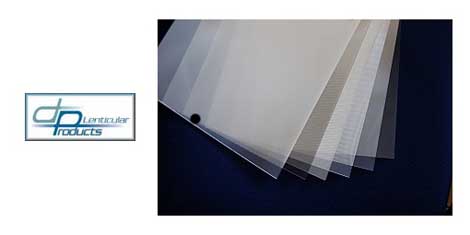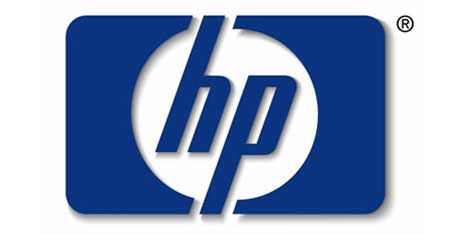
Marcus Timson, Director of FM Brooks and co-founder of the recently announced EcoPrint Europe Live 2012 event, argues the case for sustainability and explains why less is more...
Sustainability seems to provoke a strong reaction. Having spoken to many people in the industry, I realise that it is not something everybody is positive about. However, it definitely provokes a strong response.
Those who are positive about it get excited when talking about the benefits of 'eco'. They tell you about their success stories and how they have grown their business by adopting a forward-looking, sustainable path.
For the cynics amongst us, well they talk about how ‘going green’ does not offer value, how it is expensive and how no one is asking for it.
Well no one was asking for a car when the automobile was invented either. When asked about the innovation of the motor car and how he thought up new ideas, Henry Ford replied tersely that if he asked his customers what they wanted, they would have said a faster horse. This was a mantra adopted by the late Steve Jobs, who also knew a thing or two about innovation.
But people and buyers are asking for sustainability. The top brands are pledging their production and supply chains to carbon neutral status between 2015 and 2020, so there must surely be an opportunity there? There is, and plenty of businesses are making successful things happen. Leaders move first, then stuff becomes mainstream, that's a fact.
The leaders are moving to sustainability because consumers are moving their buying behaviour towards ethically produced goods, despite whatever the financial markets are doing. InfoTrends research shows that when presented with two products - one sustainable, one not - at the same price, people will choose the 'eco' option. How much proof do we need that it is a big issue?
The reality is that sustainability is still in the early adopter stage and more innovation from manufacturers is needed in order to bring the price issue into line. Print companies need the prices of their products to be close to, or on a par with, the existing options in the market. But the print companies who are succeeding with sustainability are doing so, and charging a little bit more, and still getting the business!
The leaders amongst us are shifting their businesses into alignment with the demand for green; sure, it might not yet be ubiquitous, but soon enough it will be. The trend for sustainable solutions is linked to the fact that our growing population - soon to reach 7 billion people and consuming ever more - is adversely affecting the climactic behaviour of the planet. Most law makers and business leaders know they need to change our mind-set in order to reduce these changes.
Customers, generally, don’t ask for something until it becomes mainstream. But we believe that the ‘chasm’ between the early adopters and the early majority is about to be breached. The top 100 sustainable brands number probably the biggest print buyers on the planet, so their demands will be felt throughout supply chains around the world. Soon enough, like other changes that suddenly become mainstream, green will become 'the norm'.
A key problem for those who sell green innovation in print seems to be the ‘print manager’ i.e. the person that buys print on volume and is measured by how much they buy and the rate they buy it at. They don’t care about the planet, strategy or brand. They care about price. Many clever innovators from the world of manufacturing have told me you need to get around the problem of the price-focused print manager by going straight to the brands and retailers. Many people have told me that once you get the person in a strategic role, who knows that their print must be better produced, stuff happens, and things change, for the better. And the enlightened customer might even pay a little more, because their waste costs are reduced because they don’t have to pay as much landfill costs.
And the other fact is that a holistic approach to sustainability means you save money. Honestly you do. It reduces your energy consumption and your waste and increases your efficiency, your profit and the value of your relationship with your customer. Every excited and passionate professional who has adopted a sustainable path tells me, quite rightly, that people think it costs you money; actually it does the reverse when applied throughout the business as a whole and implemented throughout the supply chain.
To those who don’t believe that sustainability is a big issue, important or likely to give value, go on thinking that. You are probably not reading this blog anyway because the title of it wouldn’t appeal to you. The top 16-20% of our market are 'getting' sustainability, for the laggards, you will have to play a catch up game when the tipping point for sustainability is reached.
For the leaders amongst us, please register to attend EcoPrint. It doesn’t matter if you are ready for sustainability now, or you want to be soon, you are welcome. We are in this together, and together, by discussing, conversing, debating and connecting we can make change a positive thing.
Yours, Marcus Timson
Ps: Laggards are still welcome to attend EcoPrint…
About Marcus Timson: Marcus is a director of FM Brooks - part of the Mack Brooks Exhibition Group - and is the co-founder of the recently announced EcoPrint event. Formerly sales and marketing director for FESPA, he has extensive experience of event organisation and community building in the print sector.
The launch of EcoPrint reflects the unstoppable trend for sustainable products, services and practices for eco-friendly production in print. For more information, please visit www.ecoprintshow.com or www.mackbrooks.com










